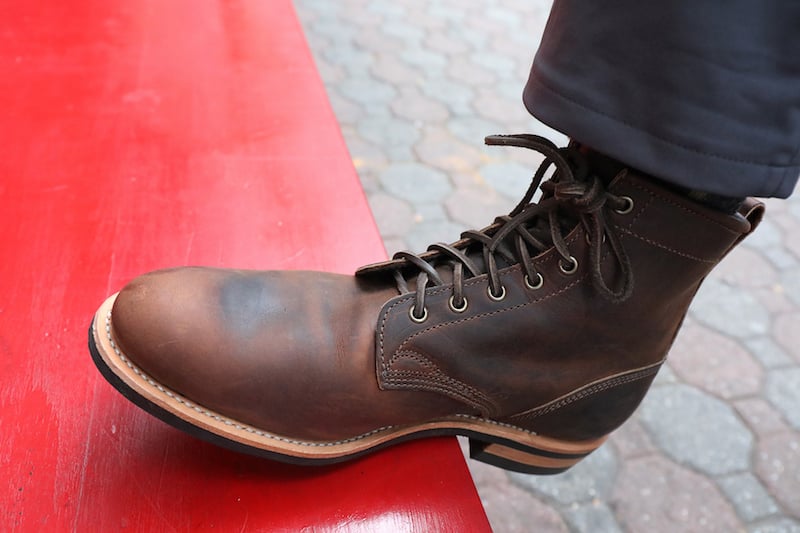
The idea of owning pristine boots all shiny and jet black or brown if you so choose is more romantic than the reality of how hard new riding boots are to squeeze onto your calf and zip all the way up. You can still break these in by just riding in them but it will usually take a little longer than softer flexing boots and lower quality liners.

And if you take your time to buy the right boots in the first place then you shouldnt need to do much breaking in at all.
Breaking in boots. Breaking-in boots can be uncomfortable or even painful at times but the end result is a comfort and familiarity unlike anything else. So how do you get to t. Breaking-in boots can be.
Full-grain leatheran inflexible and very smooth leather one of the materials most commonly seen in high-quality work boots. Boots made of full-grain leather will typically require a longer and more vigorous breaking-in period. Nubuck leatheralso full grain but with a finish that causes it to resemble deer hide.
Tips for Breaking In Your Boots the Right Way 1. First ensure the right size. Sometimes youll see folks advocating buying boots a half-size or even full size too.
Use a leather conditioneroil. Right when you get your boots apply some leather conditioner I like Chamberlains. The early days of breaking in a pair of boots arent just about creasing and softening the upper its also about getting the midsole to conform to your unique arch.
Basically at this early stage your foot is being assailed from above and below so a little extra cushioning cant hurt. The next thing that you can do to break in your cowboy boots would be to douse them with water. After submerging them into a bucket of water you can choose to wear them until they dry out.
Many people have attested to the efficacy of this method but be forewarned. Do it at your own risk. However breaking in boots is a continual process.
The boots will continue to become floppier and softer until the day you retire them so you can never be truly done breaking in boots. Make sure to continue to wear them around after you have applied the leather conditioner. This helps to drive the conditioner farther in to the leather.
Mash the heels of your new boots by stepping on them or crushing them with your hands. As weird as it sounds this will not ruin your shoes. It will soften their stiffest part and break them in.
Liv is here to walk you through the right way to break in your boots to keep you and your feet happy. Want those new hiking boots to fit like a glove. Make sure your tongues and gussets are straight.
Your new boots will be a little stiff at first which is fine. Walk around the block and around town. Make sure your boots feel good at each stage before upping the distance.
Put on a daypack and hit the trail. Off pavement is where serious breaking in happens. Be sure you gradually increase both weight and mileage throughout this phase.
Breaking Boots in at Home Undoubtedly the most effective way to break in ski boots is by actually putting them on and going skiing. However you can make it a bit easier on yourself by starting the process at home. If you dont have the ability to go out.
Breaking in new riding boots is never fun. The idea of owning pristine boots all shiny and jet black or brown if you so choose is more romantic than the reality of how hard new riding boots are to squeeze onto your calf and zip all the way up. If you can successfully get your new riding boots on then theres the painful breaking in process.
Typically stiffer boots and boots with higher quality liners tend to take longer to break in. You can still break these in by just riding in them but it will usually take a little longer than softer flexing boots and lower quality liners. Boots without heat-moldable liners will.
Take your time lacing your boots and dont be afraid to re-lace them at the first sign of discomfort. Breaking in hiking boots doesnt need to be a painful process. And if you take your time to buy the right boots in the first place then you shouldnt need to do much breaking in at all.
Breaking in your ski boots is the process of getting your foot acquainted and comfortable in your boot. It also involves the time it takes for your boot liners material to pack out and form around your foot. The break-in process usually takes a few days of solid skiing.